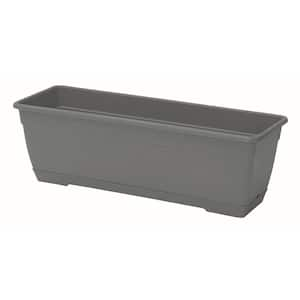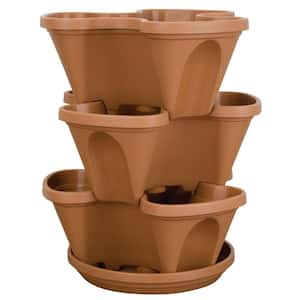Define "work"...
It's an interesting concept, just say something works rather than how well it works. "Buy this car, it has great gas mileage." Super, I want a car with "great gas mileage", don't you? A few people might be interested to know the actual gas mileage. Say 25 mpg. Wow, that is good. Of these people some might want to do a little more research. When they find cars that get 50-75 mpg and are cheaper to buy they might have a different opinion of whether 25 mpg is indeed "great gas mileage". Knowledge changes the meaning of words in a person's mind.
Skippy filters do certainly work...if the definition is there will be some nitrifying bacteria present and they will be able to convert some amount of ammonia/nitrites. Some small group of people may want to consider "how much" and whether there are better options.
Improving the Skippy...
Not all Skippy filters are the same. Pump 10,000 GPH thru it and the media will stay very clean. Muck dust has very little chance to settle on at least parts of media. Drop the flow down to 2000 GPH, 1000 GPH, 500 GPH and more and more "dust" will settle on the media choking out nitrifying bacteria. If you see a cloud of dust coming off of media when you shake it a little, that's not a place with a lot of nitrifying bacteria. Of course blowing enough water thru a Skippy to keep media clean isn't really a Skippy any more. It would be more of a fluidized bed type filter, just not a very good one.
To that end...switch the static media in Skippy with media for a fluidized filter, throw out some of the parts, and you've converted the Skippy into a fluidized bed filter, as long as there's enough flow (GPH) to actually keep the media moving. That would be a huge conversion rate improvement for any Skippy filter. Of course you'd only need a tank or barrel 1/4 the size that a Skippy needs and you'd still have way better ammonia/nitrite conversion.
Surface Area - 1995's Hottest Thing in Bio Filters
Many, many moons ago bio filters were all about
surface area. More surface area, better filter. That's all anyone ever talked about. In the past 10-15 years you hardly hear anyone talk about surface area any more. The problem was the surface area was being covered with muck dust which made surface area meaningless. Concept was sound, execution wasn't.
People moved to filters which washed media clean and increased O2 allowing fewer nitrifying bacteria to convert ammonia/nitrite at a higher rate. Trading surface area years ago for less surface area but higher 24/7 bacteria conversion was a huge improvement.
Easy building & maintenance...
Skippy filters are fun to build no question, at least for me. I also like doing the Times crossword. But easy?
Skippy instructions. In what world is that easy? I lead a very simple life so maybe I'm not the best judge. But if I just go by the number of steps, the number of parts, the number of tools needed...it just doesn't add up to simpler than other, better, filters. And the other filters can be 1/4 the size and still provide better ammonia/nitrite conversion. This doesn't really seem even close to me.
Fluidized bed instructions:
1. Buy a tank or barrel.
2. Drill hole in side of tank, add bulkhead fitting and outlet pipe to pond.
3. Put screen over outlet.
4. Run hose from pump into top of tank down to the bottom.
5. Dump in fluidized bed media.
6. Turn on pump.
7. Replace or clean media every 3-5 years.
Step 2 is too complex for most people since they don't have 2" or whatever hole saw, or a drill that can take one. And using a large hole saw in a curved barrel not so easy if this is the first hole a person has ever drilled. There was a discussion in this very forum where someone was hammering a person not into DIY that they should build a Skippy and that it was so easy. The poster kept saying they didn't even have a drill but this concept apparently is too foreign for some to accept.
TT instructions:
1. Lay some liner on the ground next to the pond, overlapping liner into pond.
2. Push dirt under edges of liner to form a shallow pool.
3. Pile, stack, rocks on liner.
4. Run pump hose to top of pile.
5. Turn on pump.
6. Replace or clean rocks every 3-5 years.
Shower Filter instructions:
1. Buy a few of these plastic window box planters at any big box garden center for about $6 each.
2. Use a lighter or match to burn/melt holes in the bottom of each.
3. Fill first one with rocks 3/4 full.
4. Place in a shallow spot in pond, like a plant shelf, stream, waterfalls pool.
5. Fill next box 3/4 full with rocks and stack inside first box.
6. Repeat step 5 until you have 2 or 3 boxes above the water surface.
7. Run pump hose into top of top box.
8. Cut/drill/burrn holes into part of hose that inside box. Clamp end of hose if needed.
9. Trun on pump.
10. In boxes above water replace or clean media every 3-5 years.
Or buy one of these plastic stackable planters from Home Depot for $37 and fill with rocks. Holes are already in them, although you can add more.
BTW, burning/melting holes in plastic is way stronger than drilling holes, The molten plastic forms a ring around the hole which stops it from splitting. Drilled holes tend to split the plastic over time.
Skippy filters are easy to build and low maintenance...
Compared to Paris Hilton.
If a person thinks a Skippy is easier and cheaper to build, easier to maintain, and meets their conversion needs then super duper you're the perfect candidate to become a proud Skippy owner. But good luck trying to convince others. They're certainly out there. But also expect to meet a lot of people who are going to look beyond "they work".




